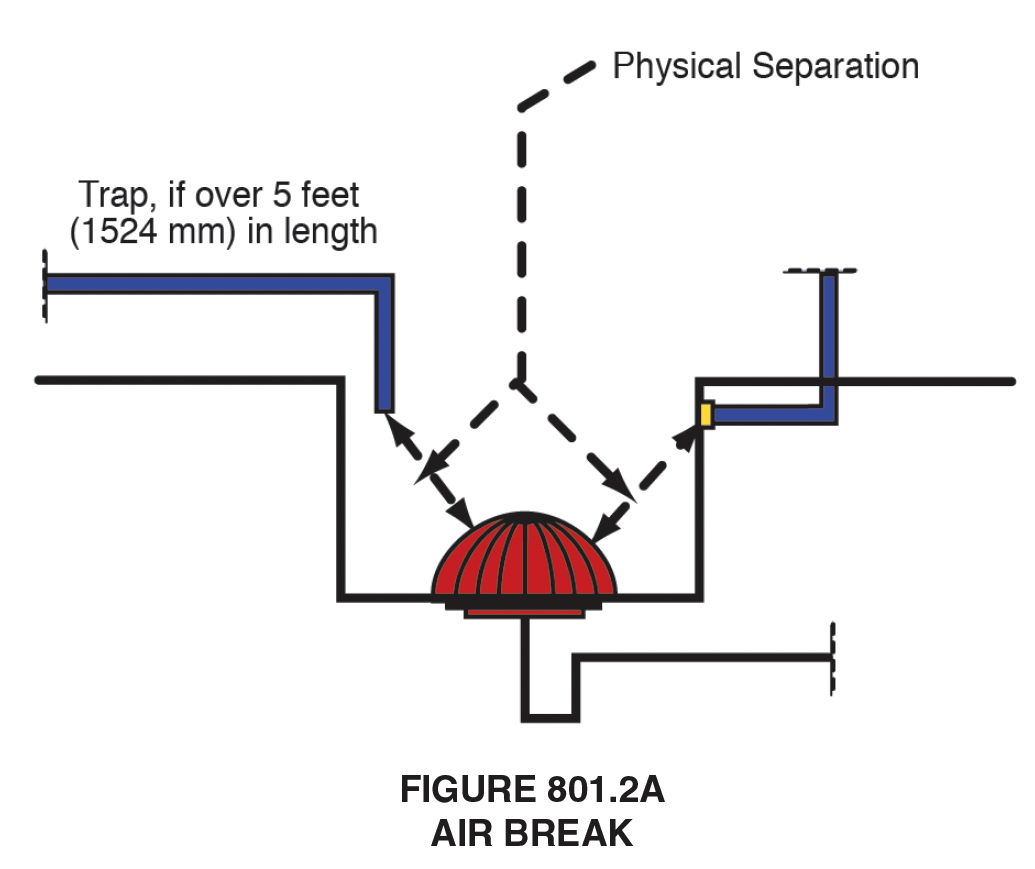May 4, 2023

801.2 Air Gap or Air Break Required. Indirect waste piping shall discharge into the building drainage system through an air gap or air break as set forth in this code. Where a drainage air gap is required by this code, the minimum vertical distance as measured from the lowest point of the indirect waste pipe or the fixture outlet to the flood-level rim of the receptor shall be not less than 1 inch (25.4 mm).
An indirect waste pipe does not connect directly to the drainage system, but conveys liquid waste by discharging it into a plumbing fixture, receptor or receptacle, which in turn is directly connected to the drainage system. Various types of fixtures, appliances and equipment are required to discharge their wastes to the drainage system by indirect waste.
There are two types of indirect waste piping:
1. Indirect waste that discharges to the receptor through an air break
2. Indirect waste that discharges to the receptor through an air gap. There are two types of air gaps:
a. Water distribution air gap.
b. Drainage air gap.
An air break provides a physical separation between the fixture indirect waste pipe and the receptor. If allowed by the code, the fixture indirect waste pipe may terminate below the flood level rim of the receptor, creating a low inlet into the receptor. An air break simply requires that there be no direct physical connection between the fixture indirect waste pipe and the receptor (see Figure 801.2a).

The drainage air gap is not the same as the water distribution air gap. The water distribution air gap is defined in Chapter 6 and determined by Table 603.3.1 (see Figure 801.2b). The water distribution air gap minimum size is also one inch but also requires that the air gap height be a minimum of two times the diameter of the indirect waste pipe if the size is over one-half of an inch.

The drainage air gap (see Figure 801.2c) is defined as the vertical distance as measured from the lowest point of the indirect waste pipe or fixture outlet to the overflow rim of the receptor. This distance is a minimum of one inch. There are no further requirements, unlike those that exist for the water distribution air gap.

Where both air break and air gap are permitted (e.g. Sections 801.3.2 and 801.4) an air break is typically used. However, if only a drainage air gap is required (e.g. Sections 801.3.3 and 801.6) there is a greater need to protect the discharging fixture from contamination.
The 2021 Uniform Plumbing Code Illustrated Training Manual is available for purchase here.
(This is not to be considered the official position of IAPMO, nor is it an official interpretation of the Codes.)
Last modified: May 4, 2023
